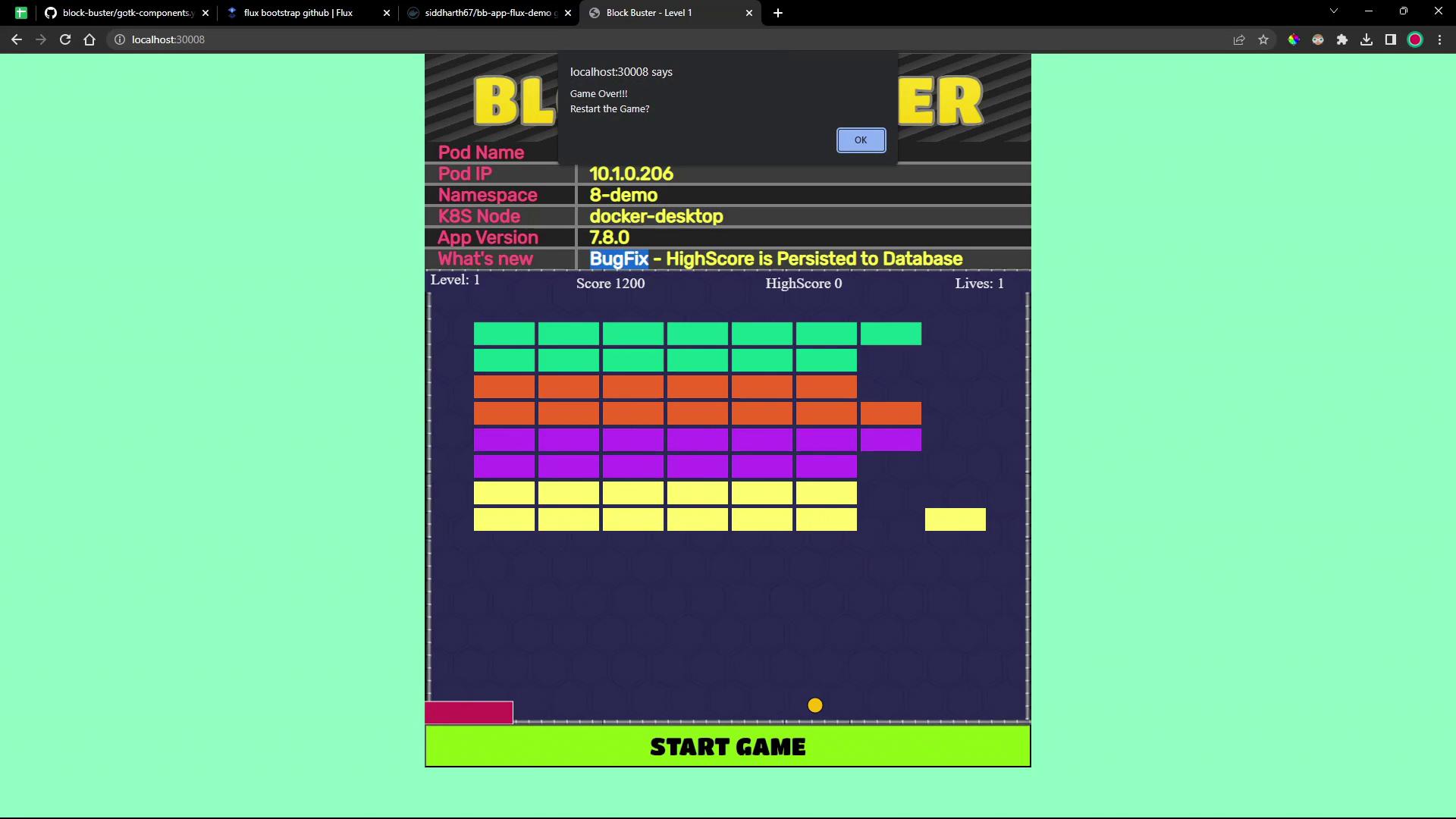GitOps with FluxCD
Image Automation Controller
DEMO Initialize DockerHub
In this walkthrough, you’ll connect your Kubernetes deployment to Docker Hub and automate updates via Flux GitOps. We’ll cover:
- Logging in to Docker Hub
- Pulling an existing image
- Retagging and pushing to your account
- Updating the Kubernetes Deployment manifest
- Deploying via Flux
- Verifying the live application
Prerequisites
| Requirement | Purpose |
|---|---|
| Docker Hub account (free tier) | Host and manage container images |
| Docker CLI installed | Build, pull, push, and manage images |
Clone of the bb-app-source repository | Source manifests for the application |

1. Log in to Docker Hub
First, clear any existing sessions and then authenticate:
docker logout
docker login
# Enter your Docker ID and password or access token
# Username: <your-dockerhub-username>
# Password: <your-password-or-access-token>
# Login Succeeded
Note
For security, use a Docker Hub access token instead of your account password.
2. Pull the Base Image
Fetch the pre-built Block Buster image from the original repository:
docker pull siddharth67/block-buster-dev:7.8.0
# 7.8.0: Pulling from siddharth67/block-buster-dev
# Digest: sha256:cf54e2a9efad47898d8ae12a3956b2ce7dbc69f239a22804ee78f691
# Status: Image is up to date for docker.io/siddharth67/block-buster-dev:7.8.0
3. Retag and Push to Your Docker Hub
Tag the image under your own namespace and push:
docker tag \
siddharth67/block-buster-dev:7.8.0 \
<your-username>/bb-app-flex-demo:7.8.0
docker push <your-username>/bb-app-flex-demo:7.8.0
# Pushing layers to <your-username>/bb-app-flex-demo
# latest: digest: sha256:cfc54e2a396562b2ce7dbc69f239a22804e78f691 size: 3662
Warning
Replace <your-username> consistently. Never commit credentials or tokens into Git repositories.
After a successful push, confirm that the bb-app-flex-demo repository with tag 7.8.0 appears in your Docker Hub account.
4. Update the Kubernetes Deployment Manifest
Switch to the 8-demo branch and edit the deployment to reference your image:
cd ../bb-app-source/
git checkout 8-demo
Open deployment.yaml and update the container image:
apiVersion: apps/v1
kind: Deployment
metadata:
name: blockbuster
namespace: dev
spec:
replicas: 1
selector:
matchLabels:
app: blockbuster
template:
metadata:
labels:
app: blockbuster
spec:
containers:
- name: app
image: <your-username>/bb-app-flex-demo:7.8.0
imagePullPolicy: Always
resources:
requests:
memory: "10Mi"
cpu: "100m"
Commit and push your change:
git add deployment.yaml
git commit -m "chore: update image to <your-username>/bb-app-flex-demo:7.8.0"
git push origin 8-demo
5. Deploy with Flux
In your Flux cluster repository, create a GitRepository source and Kustomization:
cd ../block-buster/flux-clusters/dev-cluster
# Define the Git source tracking the 8-demo branch
flux create source git bb-app-source \
--url https://github.com/sidd-harth-2/bb-app-source \
--branch 8-demo \
--interval 1m \
--export > bb-app-source.yaml
# Create a Kustomization to apply manifests from the source
flux create kustomization bb-app-kustomize \
--source GitRepository/bb-app-source \
--path ./manifests \
--prune true \
--interval 1m \
--target-namespace dev \
--export > bb-app-kustomize.yaml
# Apply the Flux resources
kubectl apply -f bb-app-source.yaml
kubectl apply -f bb-app-kustomize.yaml
Trigger an immediate reconciliation and verify:
flux reconcile source git flux-system
flux reconcile kustomization flux-system
kubectl get ns
# NAME STATUS AGE
# dev Active 1m
kubectl -n dev get all
# Confirm the blockbuster Deployment, Service, Pod, etc.
6. Verify the Application
Point your browser to the NodePort (e.g., localhost:30008) and confirm the high score persistence in version 7.8.0:

You’ve now integrated Docker Hub with Kubernetes and automated your deployment using Flux GitOps. Next up: creating a FluxRepository to track image updates and automate version bumps.
Links and References
Watch Video
Watch video content